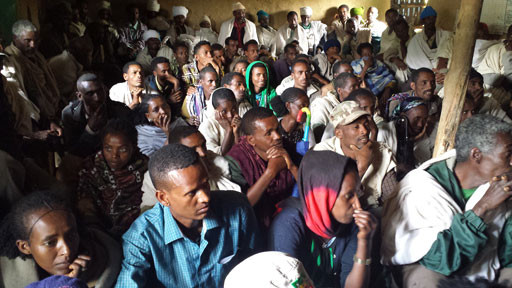11.1 What is community mobilisation?
In Study Session 6 you learned that a community is a group of people connected to each other by geographic location or common concern or interest. An urban community refers to the inhabitants of a town or sub-town with families who share facilities and are connected to each other by their location. You also learned about community engagement, the process of working with people in a community to address issues affecting their well-being.
Community mobilisation has much in common with community engagement in that it is about participation of community members. However, ‘mobilisation’ places the emphasis on actions. ‘Mobilising’ means getting things moving. Community mobilisation also has much in common with social mobilisation but has a more specific focus on communities. Social mobilisation was defined in Study Session 9 as a process enabling people to organise themselves to act collectively to achieve desired goals (WHO, 2006).
Community mobilisation can be defined as the process in which members of a community act together to achieve desired community goals. The process involves the community identifying their own needs and priorities, devising solutions and taking action to make changes happen.
Mobilisation empowers the community and enhances their ability to act together. The process involves facilitators whose role is to ensure that the community take the lead in the process. If essential WASH services are to be made available to every household in Ethiopia, communities should be mobilised and technically supported to identify their own WASH issues. Sustained mobilisation takes place when communities remain active and empowered after a particular community mobilisation programme ends (Mercy Corps, 2013).
Community mobilisation is a capacity building process, through which individuals, families, groups and organisations plan, implement and evaluate activities on a participatory and sustained basis to achieve an agreed goal. This might be a goal they have set themselves or a goal set by others. Figures 11.1 shows community members in discussion during such a process.

Effective community mobilisation requires consensus among key stakeholders, including community organisations and leaders. It should aim to involve all the community including religious groups, opinion leaders, schools, and marginalised groups.
The objectives of community mobilisation (adapted from WHO, 2006) are to:
- alert the community to their needs and rights
- encourage the community to be proactive, rather than passive
- develop awareness of the importance of sustainability of WASH facilities
- build the capacity of the community to take on decision making and self-management roles
- identify all the needs of the community and explore the resources available in the locality
- strengthen community participation.
In Study Session 9, you learned about ways of influencing behaviour. The urban setting has its own challenges and opportunities for community mobilisation and behaviour change. For example, understanding the roles and relationships among business, government and civil society stakeholders in a community is important for any mobilisation effort but could be even more complex in big urban communities because there are so many more stakeholder groups than in a rural setting.
Learning Outcomes for Study Session 11
